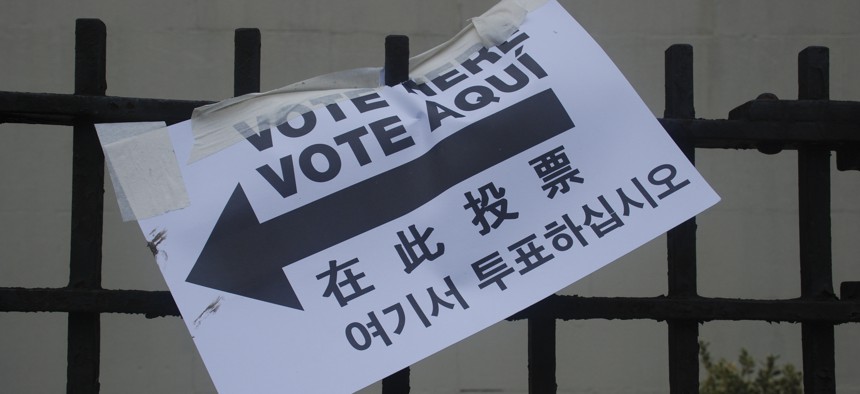
A voting sign in East Williamsburg, New York. Eric via Flickr / CC2.0
DHS Forms Election Security Task Force
The new task force will draw resources from across the Department of Homeland Security, including intelligence analysis.
The Homeland Security Department formed an election security task force last week to help shore up state and local voting infrastructure, a top official told lawmakers Tuesday.
That task force will draw resources and expertise from across the department, including Homeland Security’s intelligence and analysis division, acting undersecretary for the department’s cybersecurity and critical infrastructure division Christopher Krebs told members of a House Homeland Security panel on cybersecurity.
Previously, the department was running election security operations as a program inside its infrastructure protection division, Krebs said. The shift will make it easier to bring departmentwide resources to bear in protecting the 2018 congressional elections and various elections during 2017 and 2018, he said.
Krebs did not know offhand how much money the department is devoting to election security or how many full-time employees are working on the issue when asked by lawmakers.
The Obama administration designated election systems as critical infrastructure in the wake of Russian digital meddling in the 2016 presidential election, a move that made it easier for Homeland Security to commit resources to the problem but that caused tensions with state and local election officials.
More than nine months later, state election officials are still irked but ready to work with federal officials.
As a result, there’s been a surge in requests for Homeland Security cyber pros to test state and local voting machines and computer systems for cyber vulnerabilities, said Jeanette Manfra, assistant secretary in Homeland Security’s Office of Cybersecurity and Communications.
Manfra’s division is diverting resources from elsewhere to meet that demand, she said, but the surge has led to increased wait times.
Manfra did not have figures on how long state and local officials typically wait for that testing but did not dispute subcommittee ranking member Cedric Richmond, D-La., who said he’d heard it might be as long as nine months.
